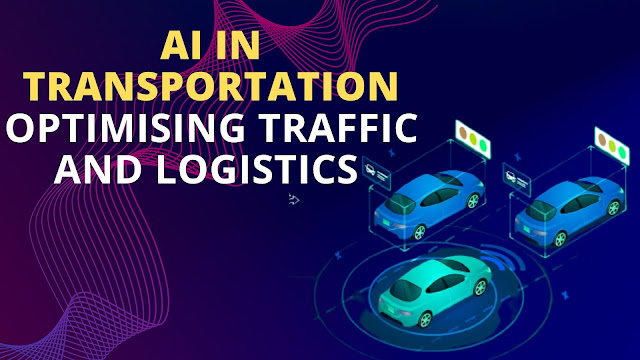Introduction
In today’s fast-paced world, efficient transportation and logistics are crucial for the smooth functioning of economies and societies. The integration of Artificial Intelligence (AI) into the transportation sector has revolutionized the way we manage traffic, streamline supply chains, and enhance overall efficiency. This article explores the myriad ways AI is transforming transportation, making it smarter, safer, and more sustainable.
1. Traffic Management
Traffic congestion has long been a headache for commuters and a drain on resources. AI is changing the game by providing innovative solutions for traffic management. Through a network of sensors and cameras, AI algorithms can monitor traffic conditions in real-time. Machine learning models analyze this data to predict congestion patterns, allowing for dynamic adjustments to traffic signals and routes. This results in reduced travel times, fuel consumption, and emissions.
2. Autonomous Vehicles
AI-powered autonomous vehicles are the future of transportation. These vehicles use sensors, cameras, and advanced AI algorithms to navigate roads without human intervention. They promise increased safety, reduced accidents, and improved traffic flow. Companies like Tesla and Waymo are already testing and deploying self-driving cars, paving the way for a transportation revolution.
3. Predictive Maintenance
For logistics companies, maintaining a fleet of vehicles and equipment is a costly endeavor. AI-driven predictive maintenance systems monitor the condition of vehicles and machinery in real-time. By analyzing data on wear and tear, AI can predict when maintenance is needed, minimizing downtime and reducing maintenance costs.
4. Route Optimization
Efficient logistics depend on optimizing routes and delivery schedules. AI algorithms take into account various factors such as traffic conditions, weather, and delivery windows to determine the most efficient routes for trucks and delivery vans. This not only saves time and fuel but also reduces the environmental footprint of logistics operations.
5. Demand Forecasting
Accurate demand forecasting is crucial for ensuring that transportation and logistics companies meet customer expectations. AI leverages historical data, market trends, and other variables to predict future demand patterns. This allows companies to optimize their inventory levels and plan transportation resources accordingly, reducing waste and costs.
6. Sustainable Transportation
AI plays a pivotal role in promoting sustainability in transportation. Electric vehicles (EVs) are becoming increasingly common, and AI helps optimize their charging schedules, ensuring they are charged when electricity is cheapest and cleanest. Additionally, AI can facilitate the adoption of shared mobility solutions like ride-sharing, reducing the number of vehicles on the road.
Conclusion
AI’s integration into transportation and logistics is reshaping the industry in profound ways. It is not only enhancing efficiency but also promoting sustainability and safety. As technology continues to advance, we can expect even more innovative solutions that will further optimize traffic and logistics, making our transportation systems smarter and more resilient.
In conclusion, the future of transportation is undeniably intertwined with AI, and the benefits it brings to our roads and supply chains are only beginning to be realized. As AI continues to evolve, the transportation sector stands to gain significantly, ultimately resulting in better experiences for commuters and more sustainable practices for our planet.



